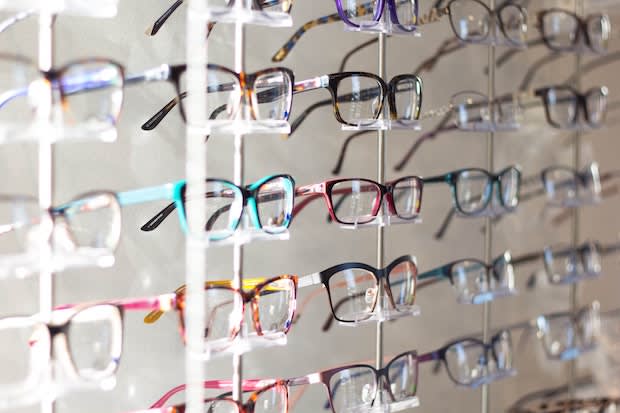Table of Contents
II. Risk Factors for Cataracts
IV. Risk Factors for Eye Allergies
We cannot control the aging of our eyes, and our quality of vision may deteriorate as we get older. Of course, this is out of our control, but there are several things we can do throughout our lives to prevent some common eye problems.
Our eyes are integral to our everyday functioning, so it is in everyone’s best interest to protect their vision at all costs. If not, disorders like chronic dry eye, cataracts, glaucoma, and severe allergy symptoms may plague our sight. There are medications like Azopt (brinzolamide) eye drops, Patanol (olopatadine) eye drops, Zaditor eye drops, Lotemax (loteprednol), and Restasis (cyclosporine ophthalmic) available to help with common eye disorder symptoms. Learn more about common risk factors that increase your risk of eye disorders.
Glaucoma Risk Factors
Glaucoma describes a group of eye disorders that may cause progressive damage to the optic nerve. There are several types of glaucoma, but the most common type (primary open-angle glaucoma) involves increased eye pressure. As the pressure in the eye increases, the optic nerve will become damaged. This is the second leading cause of blindness in the United States. [1]
Different types of glaucoma will have their unique risk factors. Generally, you may be prescribed Azopt (brinzolamide) eye drops if you possess the following risk factors: Along with these risks, other medical disorders increase the chance of glaucoma. Having diabetes can double the odds of developing glaucoma. Diabetes can affect the blood vessels in the eye and increase eye problems. [3] Cataracts form when the lens of the eye cloud over and obstructs vision. Those with cataracts equate the condition to looking through a frosty or foggy window. This type of vision can make it difficult and dangerous to drive a car and read properly. [4] Along with age, you may develop cataracts due to hereditary factors, another disease in the body, or after a traumatic injury. Other lifestyle factors may influence your risk of developing cataracts, including: Smoking: Smoking affects not only your lungs but many aspects of your body. You may not think your eyes will bear the brunt of your smoking habit, but your vision may deteriorate faster than those who do not smoke. You are two to three times more likely to develop cataracts if you smoke. Cigarettes have millions of chemicals in them that affect the lens of the eye. [5] Steroid medications: Steroid medications are commonly prescribed for several medical conditions. You may be prescribed steroid eye drops to treat eye inflammation, reduce inflammation after surgery, and minimize damage to the eye after an injury. If you take these steroids for long periods, it can create posterior subcapsular cataracts. These cataracts create a cloudy area underneath the eye’s lens. [6] As with many eye disorders, dry eyes become more common as people grow older. This condition develops when the tears cannot lubricate the eye, creating uncomfortable symptoms like stinging and burning. Dry eyes may occur if the tears are inadequate or are poor-quality and cannot supply the eye's proper moisture. Dry eyes often worsen if you are in an airplane, in an air-conditioned room, or in front of a computer for hours at a time. You may want to use Restasis (cyclosporine ophthalmic) in these situations. [7] Risk factors for dry eye can include: Being over 50 years old: As you age, tear production may slow down. Studies show that dry eye prevalence increases every five years after the age of 50. Being older also increases your chance of having conditions that cause dry eyes, like diabetes and rheumatism. [8] Being a woman: Inadequate tear production appears to be more common in women than men. This is thought to be due to hormonal changes that women experience throughout their life. These changes may be caused by birth control pills or the onset of menopause. [7] A diet low in vitamin A: Dry eyes are among the most common symptoms of a vitamin A deficiency. This fat-soluble vitamin is vital to many bodily functions, including good vision and good skin health. If you suffer from dry eyes, you can supplement vitamin A to prevent severe complications like extreme blindness or dried corneas. [9] Allergy symptoms are bothersome and may occur every year. If your eyes are often affected by allergies, you can experience itching, redness, burning, and a watery discharge from the eyes. You want to avoid these triggers as much as possible and take your prescribed eye allergy medications, like Patanol (olopatadine) eye drops or Zaditor eye drops. Some common triggers for eye allergies can include: Outdoor allergens: If you are prone to seasonal allergies, you may want to look at the weather and the pollen count. If the pollen count is high, you may want to stay inside to prevent exacerbating your symptoms. Pollen counts are the highest in the spring when new flowers and plants are blooming. You may also want to have an allergen test to see if you are allergic to any grasses, trees, or weeds. Indoor allergens: Irritants within your own house may also trigger eye allergies. These can include your pets and their irritating dander, as well as dust mites and mold. Cleaning and vacuuming your house regularly can help prevent symptoms. [10] The content in this article is intended for informational purposes only. This website does not provide medical advice. In all circumstances, you should always seek the advice of your physician and/or other qualified health professionals(s) for drug, medical condition, or treatment advice. The content provided on this website is not a substitute for professional medical advice, diagnosis, or treatment.
Risk Factors for Cataracts

Dry Eye Risk Factors

Risk Factors for Eye Allergies
